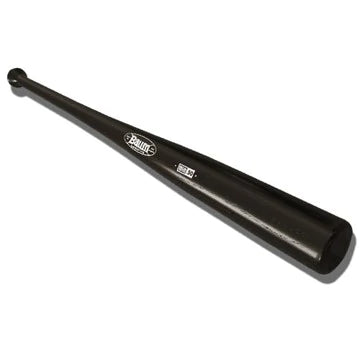
Baseball's Most Eccentric Rules
Share
Unravelling the quirks of America's favourite pastime
Baseball has a rich history and a set of rules that have evolved over time. While many of these rules are well-known and easily understood, there are a few hidden gems within baseball's rulebook that can leave fans scratching their heads. In this blog post, we will embark on a journey to explore some of baseball's craziest rules, unravelling the quirks that make the game even more intriguing.
The infield fly rule:
Let's start with a rule that can confuse even the most seasoned baseball fans: the infield fly rule. This rule comes into play when there are fewer than two outs, and there are runners on first and second base, or the bases are loaded. If an infield fly is hit and the umpire judges that it can be caught by an infielder with ordinary effort, the batter is automatically out, even if the ball is dropped.
The purpose of this rule is to prevent fielders from intentionally dropping a pop-up to initiate a double or triple play. While it may seem strange at first, the infield fly rule ensures fairness and discourages defensive teams from exploiting a strategic advantage.
The designated hitter rule:
In the American League of Major League Baseball (MLB), there is a rule that allows teams to use a designated hitter (DH) instead of having the pitcher bat. This rule differs from the National League, where pitchers are required to bat for themselves.
The designated hitter rule adds an extra layer of strategy and excitement to the game. Having a specialised hitter in the lineup can increase a team's offensive prowess, leading to higher-scoring games. However, the rule also sparks debates among fans and purists who appreciate the traditional style of the pitcher taking their turn at bat.
The balk rule:
Baseball's balk rule is another fascinating quirk that can leave both players and fans perplexed. A balk is called when the pitcher makes an illegal movement or motion with the intent to deceive the baserunners. This can include actions such as pretending to pitch, failing to come to a complete stop in the set position, or not stepping toward the base before throwing to it.
The balk rule serves to maintain fairness in the game and prevent pitchers from gaining an unfair advantage. It can be a controversial call, as the interpretation of a balk can vary between different umpires, leading to spirited discussions among fans.
The ground rule double:
In some stadiums, there are unique ground rules that come into play when a batted ball lands in specific areas. One such rule is the ground rule double, where if a batted ball bounces over the outfield fence or into a designated area, it is automatically ruled a double.
The ground rule double can create interesting scenarios, as runners on base are allowed to advance only two bases, rather than the customary four bases for a home run. This rule adds an element of unpredictability to the game, as the trajectory and bounce of a ball can greatly impact the outcome.
Baseball's craziest rules add an extra layer of intrigue and excitement to the game. From the infield fly rule and designated hitter rule to the balk rule and ground rule double, each quirk showcases the complexity and uniqueness of America's favourite pastime. While these rules may seem perplexing at first, they contribute to the strategic depth and rich history of baseball.
Don't panic!
The next time you find yourself scratching your head over a peculiar call or rule in a baseball game, take a moment to appreciate the intricacies and idiosyncrasies that make the sport so captivating. After all, it's the combination of these quirks and the love for the game that keeps baseball fans coming back season after season, cherishing the unforgettable moments that unfold on the diamond.
Shop our top selling products here.




